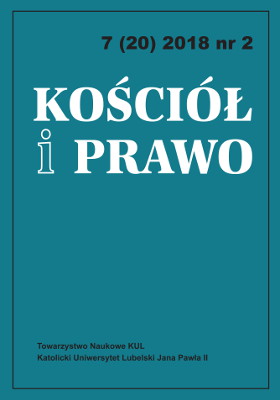Matrimonium per procura w Kodeksie Prawa Kanonicznego z 1917 i 1983 roku – zarys prawnoporównawczy
Matrimonium per procura in the 1917 and 1983 Codes of Canon Law – a Comparative Outline
Author(s): Lucjan Świto, Małgorzata TomkiewiczSubject(s): Law, Constitution, Jurisprudence, Canon Law / Church Law
Published by: Towarzystwo Naukowe KUL & Katolicki Uniwersytet Lubelski Jana Pawła II
Keywords: 1917 Code of Canon Law; 1983 Code of Canon Law; Church law; contracting marriage; power of attorney
Summary/Abstract: Being an act of will through which a man and a woman offer themselves to each other and accept each other to make an irrevocable union, the marriage consent in the Catholic Church has to be expressed in a canonical form and in a proper manner. Such a consent is expressed by both nupturients at the same time and place and – in principle – expressed personally by the two people entering the matrimony. However, as history shows, marriage vows have been made by proxy “since forever”. Contracting a marriage between two absent people (inter absentes), i.e. between prospective spouses who – for some reason – could not take part in the ceremony in person – has a long tradition, although its reception has varied from one society and religion to another and has undergone various modifications over time. In the Catholic Church, matrimonium per procura was codified by the 1917 Code of Canon Law and then in the 1983 Code of Canon Law.
Journal: Kościół i Prawo
- Issue Year: 7/2018
- Issue No: 2
- Page Range: 153-171
- Page Count: 19
- Language: Polish

